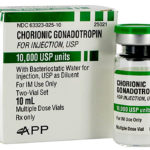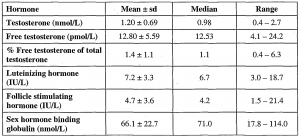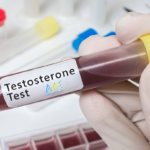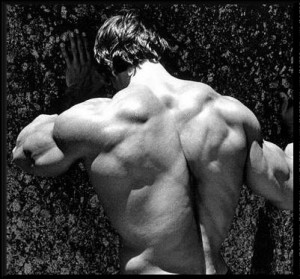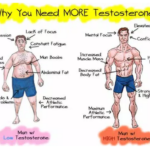Testosterone is a hormone and is a steroid from the androgen group. The main function of testosterone is as a male sex hormone. Testosterone is related to men because they have levels of around 10 times more than women. The testes secrete testosterone, and in small quantities so do the ovaries, the adrenal glands cortices and the placenta, which synthesizes it from cholesterol.
Testosterone is produced in the Leydig cells of the testes. The male gonad has a dual function, so testosterone directly influences spermatogenesis. Testosterone transport is performed by the sex hormone binding globulin (SHBG) found in the plasma. Once the testosterone arrives in the target tissue it is transformed from testosterone into 5a-dihydrotestosterone which is 2.5 times more potent. This is how the hormone exerts its physiological role. It binds to the steroid hormone receptors that are located in the nucleus and the cytosol. These receptors are ligand-activated and undergo a structural chance rendering them capable of binding to the specific nucleotide sequences in DNA which are called hormone response elements (HREs). Whilst they are bound to these they can influence certain genes’ transcriptional activity.
Scientists first managed to isolate testosterone in 1935 when they took it from a bull. Since then testosterone has been used as the base for a range of pharmaceutical products and used for a diverse range of indications like athletic enhancement, male infertility, erectile dysfunction, libido problems and the prevention of osteoporosis when it is caused by a lack of androgens. Experts warn though that the reasons for use should be prudently chosen as actual, real testosterone deficiency is actually quite rare.
The development of the external genitalia of males relies in male fetuses on testosterone being produced. When males reach puberty there is an increase in their testosterone level which causes the further growth of genitalia and other secondary sex characteristics like voice changes and facial hair.
In women, an excess of testosterone causes male-type physical development (also called masculinisation). This is what has happened with the East European athletes of the late 1970s and the early 1980s who were given so many testosterone-based drugs that some of them have had to go through with a sex change as they were no longer able to function as women. But this doesn’t make testosterone a bad thing. It means that should it be used recklessly then it can cause some unwanted side effects.
This site talks about the different types of treatments involved in testosterone therapy. We look at the effects of testosterone and also the side effects of testosterone. We would encourage you, whatever therapy you take to take it responsibly and to take the relevant blood tests before commencing under the advice of a qualified physician.
